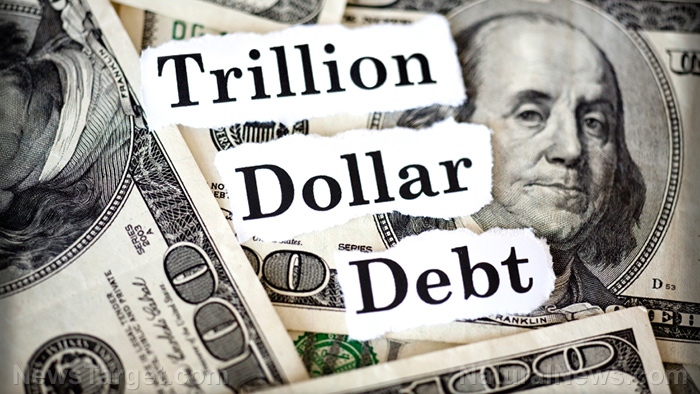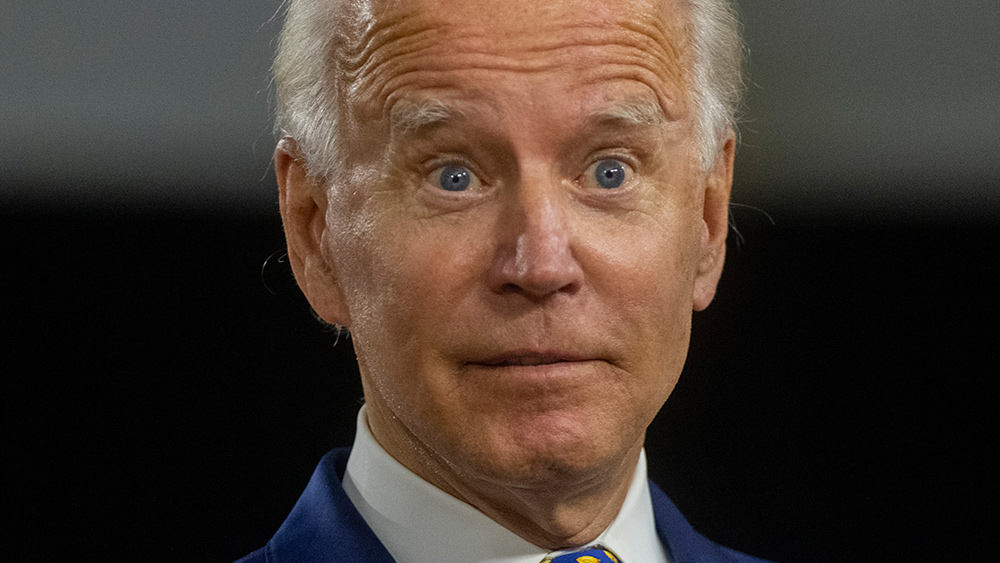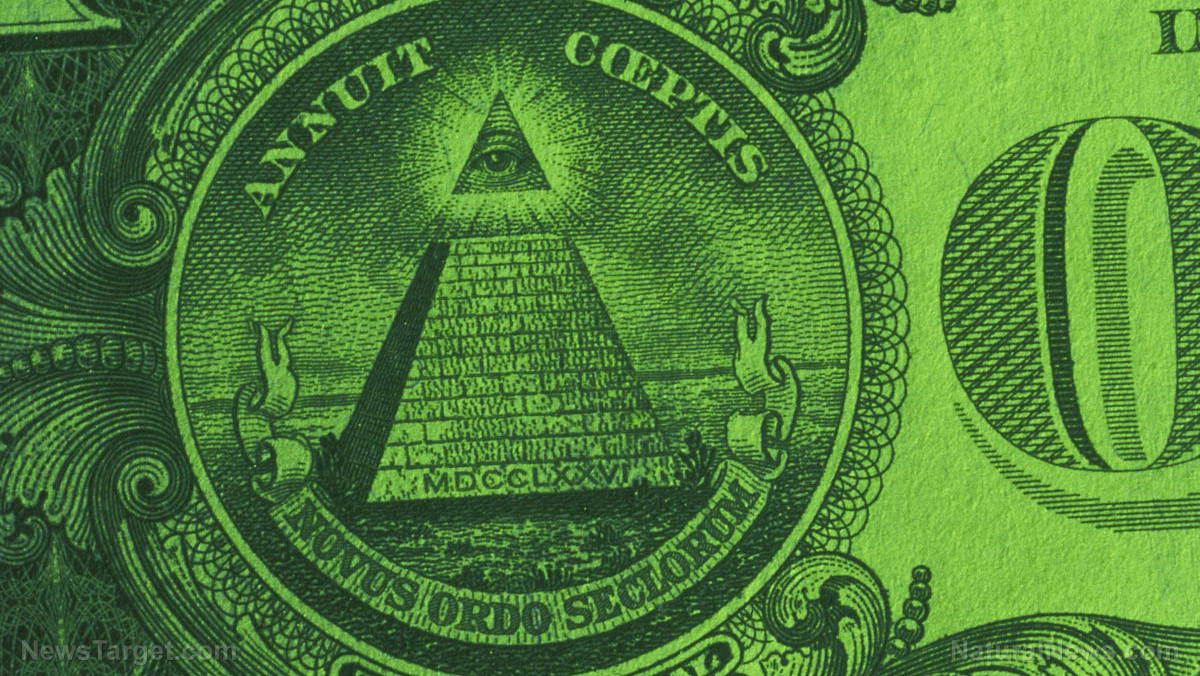Drowning in debt: The paralysis at the heart of the US fiscal crisis
05/10/2024 / By News Editors

It can appear puzzling why at certain times in history a government facing a looming crisis simply does not address it. The problems accumulate in plain view while little is done to actually solve them. The human imagination being what it is, this inaction is inevitably attributed to some mix of corruption, malfeasance, and incompetence. And certainly the road to any system-level crisis is strewn with missteps and short-sighted policies. But there comes a point when the horizon of possibility has closed and there is simply nothing a government can do without unleashing forces that could easily overwhelm it.
(Article by Henry Johnston republished from RT.com)
In the strange and torpid final years of Tsarist rule in Russia, the unfolding crisis that would eventually result in the Russian Revolution seemed immobilized in a state of suspension as the country’s major actors recoiled from taking decisive actions for fear of detonating the very cataclysm they had sought to avoid. Much has been made of the weakness and indecision of Nicholas II, but by those fateful last years the anachronistic Romanoff dynasty was collapsing and little could be done to stop it.
Although the circumstances and specific crises bear little in common, a similar paralysis seems to have infected the US government as it confronts several intractable problems. A glaring example of this is that Ukraine’s impending defeat at the hands of a superior Russian military has put Washington in an impossible situation: it has proven incapable of delivering on its promise of inflicting a strategic defeat upon Russia, but the path available to it – negotiating with Russia as equals or, heaven forbid, from a position of weakness – is simply incompatible with the paradigm in which Washington operates.
No longer believing in victory, the US is not in any meaningful way helping Ukraine – nobody believes the recent aid package will actually change much. But a diplomatic solution could have the effect of laying bare America’s waning global influence and possibly even destroying NATO as a credible institution. With no good options, Washington is merely staggering along until events overtake it.
But Ukraine is hardly the worst of it. A crisis shaping up to be far more potent and deep-rooted is America’s rapidly deteriorating fiscal standing. And here again, policymakers seem paralyzed by their lack of scope to address what JPMorgan CEO Jamie Dimon thinks is “the most predictable crisis we’ve ever had.”
The crux of the matter is that the US government and economy at large had been overly dependent on a factor that, until quite recently, was taken for granted as being permanent: low interest rates and its corollary of low inflation. However, when interest rates moved higher, deficits suddenly mattered again. But the highly financialized US economy cannot easily be subjected to austerity to rein in the spiraling deficits. It is technically fraught, as we will discuss, even if it were politically possible. Meanwhile, the spending cuts that are possible are either a political powder keg or simply inconceivable to the ruling class.
Taking away the proverbial punch bowl
Broadly speaking, interest rates had been falling for essentially four decades, a state of affairs largely attributable to the effects of globalization and entrenchment of the dollar as the world’s reserve currency. The integration of global financial markets allowed countries with high savings rates to subsidize American borrowing by buying US debt, thus putting downward pressure on interest rates. Another way to think about this is that for a long time the US was able to maintain low rates because it could export much of its inflation through global use of the dollar as other countries sterilized the newly printed dollars.
Meanwhile, the near-zero-rate world prevailing after the financial crisis of 2008-09 was an even more exotic milieu for the economy. Not surprisingly, debt levels exploded. Just since 2007, federal debt held by the public has surged from $4.6 trillion to an astounding $27.4 trillion. Overall government debt has now surpassed $34 trillion. And yet, despite the surge in debt, calamity did not strike and the government had no problem borrowing.
This bred a certain dismissiveness about the debt and deficits and helped a bi-partisan consensus coalesce in Washington around higher government spending, while the old budget hawks in Congress went extinct. And economists were sanguine: as recently as 2018, Nobel Prize-winning economist Paul Krugman called the debt an “absolutely trivial” worry. Others, such as Larry Summers, Jason Furman, and Olivier Blanchard, waxed eloquent about how interest rates would remain historically low indefinitely.
But everything changed in 2021, when a phenomenon thought all but eradicated from Western economies returned with a vengeance: inflation. In order to tame the price growth, the Federal Reserve embarked on a series of interest rate hikes that saw 10-year Treasury yields – the rate the federal government pays to lenders – post their sharpest rise in four decades.
The higher rates caused the interest expense owed by the government to surge. And quite suddenly, the US found itself on an utterly unsustainable fiscal path. Despite there not being a recession, the federal budget deficit effectively doubled to a staggering $2 trillion in the fiscal year through last September. One would be forgiven for thinking the US was shifting to a war-time economy. And it hasn’t stopped there: the debt is increasing at a staggering clip of $1 trillion nearly every 100 days.
The interest expense on the debt has already surpassed defense spending – no small feat since the US isn’t exactly frugal about protecting its hegemony – and is on pace to grow at a blistering 30% year-on-year pace this year to reach $870 billion.
So what had appeared to be an appetizing free lunch turned out to be a mirage. The US is now learning a basic point of economic theory the hard way: deficits don’t matter as long as interest rates are low, because the cost of carrying the debt is manageable. And interest rates, in turn, can be low as long as inflation is under control. But when inflation rises, interest rates go up, and deficits balloon. So all else being equal, higher inflation means higher interest rates – meaning ever deeper deficits.
We have now come to the vicious feedback loop that has emerged at the heart of the interplay of interest rates, inflation, and deficits. Whereas before we saw low inflation allowing for low interest rates and thus easy-to-carry deficits, now we have the deficits themselves becoming a significant driver of inflation.
The reason this is happening has to do with the massive interest expense. We tend to think of interest only as an expense for the government. But for the investors who own US debt, it represents income. And since roughly three-quarters of US public debt is held domestically, most of that interest income stays at home. Clearly a good portion of it doesn’t find its way into the broader economy – most investors don’t take the interest income generated from their Treasury holdings to the grocery store – but enough of it does enter circulation to move the needle.
So paradoxically, higher interest rates amid high debt levels can actually create more inflation, not less. Another way to think about this is that when deficits are large, the stimulus effect from the fiscal side ends up overshadowing the constricting effect on private-sector lending that the higher interest rates produces.
What a financialized economy cannot tolerate
If we are now dealing with structurally high inflation – which the latest inflation prints seem to confirm – it will mean structurally higher interest rates. And yet, all else equal, higher interest rates mean lower asset prices (stocks, bonds, derivatives, real estate, etc.) This is because: first, the higher rate of return on risk-free savings offered by banks pulls some money out of assets; second, as the risk-free rate of return increases, the risk-adjusted return from investing in an asset decreases, thus lowering the price that investors are willing to pay for an asset today.
But the prospect of lower asset prices is a particularly acute problem for the US economy, which is now so financialized – meaning a large portion of income in the country is tied to asset prices – that a drop in asset prices will reverberate far and wide and trigger various knock-on effects. One such effect is a reduction in the tax intake by the government. In fact, an interesting pattern has emerged that underscores just how much the US tax base is dependent on asset prices.
The so-called ‘everything bubble’ of 2021 – when record-high valuations were recorded in a wide range of asset classes – led to a large increase in tax receipts the following year (up 21% year-on-year) when taxes on the income generated came due. However, when the Fed hiked interest rates in 2022, financial markets responded very negatively and asset prices went down. Sure enough, tax receipts in 2023 declined, and the deficit blew back out.
We are seeing this dynamic play out right now before our very eyes: hotter than expected inflation is compelling the Fed to hold off on rate cuts, which has dampened stocks.
So any attempt at austerity will push asset prices lower and thus suppress tax receipts – therefore having the perverse effect of actually exacerbating the deficit as more money needs to be borrowed to cover the difference. This is a cycle that is very difficult to extricate an economy from. And there is another risk in trying to somehow put the brakes on: a highly financialized debt-fueled economy does not respond to austerity in the same way that a more conventionally structured one does, because it’s never known where the leverage is or how large it is. Lehman’s balance sheet in 2008 had only $680 billion in assets and yet managed to detonate a global meltdown.
So to summarize, the return of inflation upset a balance that had evolved over many years whereby the US could run up ever higher debts without consequence. But the high interest rates blew out the deficit, which has meant more borrowing and, eventually, more inflation because high levels of deficit spending are inherently inflationary. The predicament is that it won’t be easy to bring down the deficit through austerity or by the type of financial tightening that would reduce asset prices – not least because the tax base is so dependent on asset prices.
Après moi, le déluge
The warnings of an impending fiscal crisis are coming fast and furious now, and they sound very different than before. If in years past one might have heard a call for fiscal responsibility couched in idealistic rhetoric touting America’s strength and rectitude – “History will show you there’s no country in history that’s been strong and free and bankrupt,” an old-school former Congressman from Tennessee, John Tanner, once said – today’s warnings are stark, immediate, and specific.
They sound more like what Joao Gomes, the vice dean of research at the Wharton business school, told the US Senate Budget Committee in March: “the coming fiscal crisis will be triggered by a sudden loss of confidence by the general public in the federal government’s finances and on those tasked with managing them.” “Its consequences will be severe and leave lasting – probably irreversible – scars on our economy and society,” he concluded.
But very little is being done to actually avert this outcome because there is little room for maneuver. An enormous and complex system that evolved over decades in a world of low interest rates cannot be transferred to new footing overnight – and certainly not without a lot of pain and political risk. The approach so far has been to simply keep spending and throw liquidity at anything that breaks in the financial system due to the higher interest rates.
The spending is, at least superficially, working. The economy is being touted as strong – a view, by the way, that most voters don’t buy – and the impressive growth figures of the past year or so seem to back that up. But a lot of this growth is simply being fueled by the deficit spending ($1.6 trillion in fiscal year 2024). Give me a trillion and a half and I will show you a good time!
Meanwhile, any serious attempt to confront the deficits eventually runs into the brick wall of the entitlement programs. “If you want to deal with deficits, you’re going to have to deal with entitlements. That’s where the spending is,” said Rep. Tom Cole (R-Okla.), a senior member of the House Appropriations Committee, said a few years back. In other words, don’t bother coming to talk to his committee.
And in fact, Congress only debates 28 cents of every dollar it spends; the vast majority of federal spending is mandated by statute and takes place outside the budget appropriations process. These are primarily related to the major healthcare and benefits programs.
It has been understood for decades that the entitlement programs are unsustainable, and now the surge of retiring baby boomers is only adding to the strain. But the system has been left in its dysfunctional state indefinitely because as long as debt was cheap the government could borrow its way through. The dirty not-so secret behind Social Security, for example, is that payroll taxes collected in the past were not actually invested or saved to pay for future obligations but were spent immediately to finance other government needs. This means that there’s not actually a trust fund to draw down; there is only a government ledger to borrow against.
No politician has been willing to seriously consider major reforms to the entitlement programs. Such a foray would strike too close to the heart of America’s current social contract. But when rates were low, they didn’t have to: the day of reckoning could always be postponed.
Dialing back military spending would seem to be one possible avenue toward making some headway. At the very least, a prudent move would be to acknowledge that the cost of maintaining an empire and bankrolling the likes of Ukraine, Israel, Taiwan has suddenly become prohibitive and to back away from those commitments. But even this is inconceivable to the Washington establishment, as the recent Ukraine bill to string along a losing war demonstrates. Such a retreat would be too much at odds with what they see as the raison d’être of the American state.
Such an attitude is a bit reminiscent of when East Germany, against all common sense, rejected Gorbachev’s ‘glasnost’ and ‘perestroika’ reforms in the late 1980s, Otto Rheinhold, the leading theorist of the East German Communist Party posed the fundamental question with exceptional clarity: “What kind of right to exist would a capitalist GDR have alongside a capitalist Federal Republic?”
The leading theorists of the Washington establishment pose essentially the same question: what is America if not the globe’s indispensable state? Such rigidity only exacerbates the paralysis.
Swedish commentator Malcom Kyeyune observed that “the single most dangerous period for a political system is when it has ignored a looming crisis for years and decades, and then finally, backs snugly perched against a wall that cannot be moved, tries to apply wide-reaching reforms.”
Just as the French monarchy’s financial woes on the eve of the convening of the Estates General in 1789 had, after decades of mismanagement, become an issue that could not be addressed by purely technical means, the problem of the looming fiscal crisis has moved far beyond the realm of economic policy.
Those holding the reins of power of the US government seem to sense the truth of Kyeyune’s words: they are doing as little as possible, because there is nothing they can do without wading right into that most dangerous period.
Read more at: RT.com
Submit a correction >>
Tagged Under:
big government, Bubble, current events, debt bomb, debt collapse, economic collapse, economic riot, economics, economy, finance riot, government debt, Inflation, insanity, market crash, money supply, national debt, pensions, risk, US fiscal crisis, Xpost
This article may contain statements that reflect the opinion of the author
RECENT NEWS & ARTICLES
COPYRIGHT © 2017 BUBBLE NEWS




















